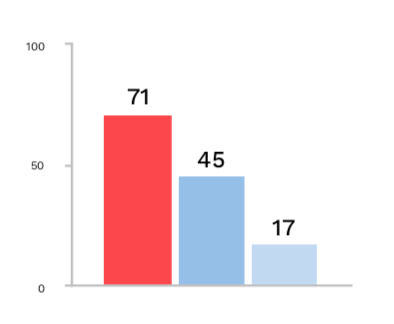
The most ubiquitous question amongst athletes in their sport preparation is body weight.
“How much should I weigh?”
“I have to drop some pounds to move better”
“How much muscle could I put on by the season?”
The answer is that these are the wrong questions for an athlete or coach. Function is the better question, as the goal is to put more force into the ground in a sequence that is associated with sport success. This Movement Signature requires us all to avoid assumptions off pure size.
After all, your ideal weight is only a process, the goal is to address function and everything else falls into place. The real question is how to guide processes like that of body mass towards the ultimate goal of athletic performance and health.
Athletes with the extreme load Movement Signature create great initial force, but just can’t sustain this energy and force through transitions and full ranges of motion. LOAD is the average eccentric rate of force development, representing the onset of muscular tension until the body stops itself from going in this initial direction. As a result, the ankles and knees are the primary joints involved in LOAD, accompanied by the nearby muscular involvement of the quadriceps and calves.
We have mostly discussed large body mass as the best casual example of extreme load athletes. These larger individuals are basically stuck to the ground like gravity boots, magnetized by gravity’s pull downwards to assist that initial force production. However, extreme load athletes are not always fat, bad jumpers that are stuck to the ground. Sometimes these individuals just have an excessively stiff lower leg that precludes the transfer of energy up the chain.
The diagnosis of extreme load Movement Signature is made on the force plate when LOAD is statistically significantly higher from the other two variables of EXPLODE and DRIVE. The T score value comes from our database of over 900,000 standardized trials, allowing a reliable and valid representation of an individual’s status across the population.
The extreme load signature can also reflect training or sport history. Exclusive anterior chain dominant activities in a training environment such as heavy squats can predispose the excessive eccentric tension found in extreme load. Perhaps the best sport history is athletes required to hold their position well. Offensive lineman, the front row in rugby, and catchers represent the most common examples of remaining square to the play and holding a position.
Whether a consequence of their sport or an unassociated injury history, ankle mobility can contribute to this excessively high eccentric force. For example, injuries to the ankle cause the build-up of scar tissue and dysfunction of the joint capsule.
More acutely, we also see the extreme load signature in athletes with a profound protective mechanism. The body knows it can’t control body weight through greater ROM and as a result defaults to a short quick loading pattern. This inability to relax reflects a negative interaction between agonist-antagonist muscle firing, resulting in a co-contraction of these opposing muscles. The result is a predominance of eccentric or initial tension (i.e. calves).
The importance of this extreme load signature gives the valid information when an athlete is too heavy to produce force in a healthy sequence. For example, pitchers should have a rotational athletic signature, producing a high initial LOAD, but finishing with an equally high DRIVE. If these pitchers become too overweight for their strength, or become too stiff in their lower leg, the result is an excessively high LOAD.
The consequences of extreme load are the body’s inability to absorb or dissipate forces upon loading or impact. So instead of bending (flexing), the athlete twists and can create torque on the hinge joints (foot and knee) which were not meant to rotate like the ankle. So bones and ligaments in these areas are at risk for injury, and the most common issues we find are the ACL and foot (sesmoid).
Certainly athletes need load, creating force initially is crucial to hold your ground in a certain position or to use your legs to begin movement. However, you can have too much load so there can be a few general concepts to avoid the extreme load by pursuing function.
Train relaxation (jumping and speed exercises require this alternating contraction best)
Use large ranges of motion
Posterior chain; usually single leg movements as they require longer Force production
Extreme load has excessive initial force, unable to be used through full ranges of motion
High injury risk in lower leg (ACL, feet, etc.) from a low ability to absorb force by bending
Single leg movements are great for improving the ability to absorb and transfer forces